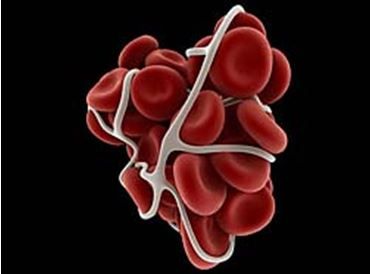Primary Care Quiz: CHA2DS2-VASc Stroke Risk Calculator
What is your command of the components of this risk prediction tool for patients with atrial fibrillation? Find out with our 4-question quiz.

As the population ages, both the incidence and prevalence of atrial fibrillation (AF) continue to rise. When managing AF, it is important to use a two-pronged approach, where both the risk factors for the disease and disease complications are addressed. Stroke and systemic thromboembolism remain the most feared complications of this common arrhythmia. Risk prediction tools, such as the CHA2DS2-VASc scoring system, are becoming critical in the clinical assessment of every patient with AF because results can help guide preventive treatment.
Are you up on the nuances of the formula? Find out with these 4 questions.
1. What does the CHA2DS2-VASc score predict?
A. Risk of death
B. Risk of cardiovascular events
C. Risk of stroke
D. Risk of stroke or other thromboembolic event
E. All of the above
Click here for answer and next question
Answer: E. All of the above1,2
Although the traditional use of the CHA2DS2-VASc score, and the use for which it was originally developed and validated, is for the prediction of risk of stroke or other thromboembolic event in patients with non-valvular atrial fibrillation (AF), it has also been shown to predict death and cardiovascular events in patients with stroke without underlying AF.
2. Which of the following would NOT receive a point in the CHA2DS2-VASc risk formula? (More than one option may apply)
A. Age 64 years
B. Presence of a 50% stenosis of the right femoral artery
C. History of transient ischemic attack, lasting under 1 minute
D. Male sex
E. Congestive heart failure
Please click here for answer and next question.
Answer: A. Age 64 years and D. Male sex3
The score calculator does not assign any points for being under the age of 65 years nor are there any points assigned for male sex. Therefore, the lowest CHA2DS2-VASc risk score would be a 0 for men and a 1 for women. However, a TIA even without a documented stroke or a risk of other thromboembolic event, receives 2 points in this scoring system and should always be included. Peripheral arterial disease (PAD), which was not included in the original CHADS2 risk stratification system, has now been recognized as an important contributor to risk. Notably, the PAD does not have to be present in the cerebrovascular system (ie, carotid arteries) to confer added risk.
3. Can the CHA2DS2-VASc scoring system be used to predict stroke or other thromboembolic events in patients with valvular AF?
A. Yes
B. No
Please click here for answer and next question.
Answer: A. No
The score was developed and validated in patients with non-valvular AF. Therefore, it should not be applied to predict risk in those who have AF associated with valvular lesions (such as mitral stenosis).
4. What is the approximate risk of stroke or thromboembolism in a 72-year-old man with hypertension, diabetes, and history of TIA?
A. 6%
B. 9%
C. 15%
D. 20%
E. 22%
Answer: C. 15%
The patient has a CHA2DS2-VASc score of 5 (see table below), which gives him a risk of stroke of 15.3% per year. Given his high annual risk, he should receive anticoagulation with warfarin or with a novel oral anticoagulant indefinitely to decrease this risk.
Table. CHA2DS2-VASc Score: Stroke Risk Assessment in Non-valvular Atrial Fibrillation
References:
References:
1. Olesen JB, Lip GY, Hansen ML, Hansen PR, et al. Validation of risk stratification schemes for predicting stroke and thromboembolism in patients with atrial fibrillation: nationwide cohort study. BMJ. 2011;31:342:d124. doi: 10.1136/bmj.d124.
2. Ntaios G, Lip GY, Makaritsis K, Papavasileiou V,et al. CHADS2, CHA2DS2-VASc, and long-term stroke outcome in patients without atrial fibrillation. Neurology. 2013;80:1009-1017. doi:10.1212/WNL.0b013e318287281b. Epub 2013 Feb 13.
3. Lip GY1, Nieuwlaat R, Pisters R, Lane DA, Crijns HJ. Refining clinical risk stratification for predicting stroke and thromboembolism in atrial fibrillation using a novel risk factor-based approach: the euro heart survey on atrial fibrillation.Chest. 2010;137:263-272. doi: 10.1378/chest.09-1584. Epub 2009 Sep 17.